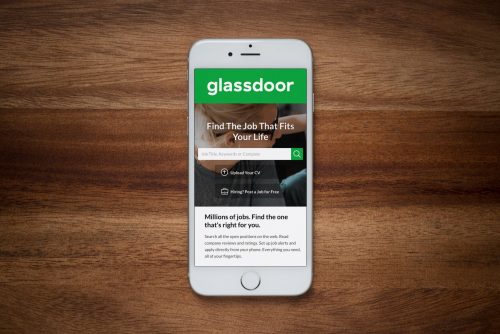Get out of your own head. Right now. Whilst it’s comfortable, familiar and safe, it’s no good to anyone else if you’re spending all your time in there. It’s particularly disruptive to your brand, your audience, and your employees.
As creatures of habit, we like to reassure ourselves that everything is going to be okay. With that, we make assumptions that others have the same outlooks and experiences as us. This generally makes for an easier life, and avoids ideas of anxiety or worse still, being WRONG. (Spoiler alert: sometimes you are wrong.)
In Seth Godin’s book, Marketers Are Liars he compares ‘worldview’ to a lens. “Present the same data to two people with a different worldview and they may take entirely opposite decisions.” Marketers regularly forget this. Which is why people like Seth feel compelled to bang on about it so often. Sorry, Seth, but you do.
The argument certainly holds water. Products, processes and even projects can go in different directions depending on who they’re exposed to. Everyone has seen the meme where the perfectly paved path has been circumnavigated by a line through the grass. Whilst some people like to follow the intended path, others like to carve their own.
Another great and real-world example of this is Juicero. This blog isn’t long enough to tell the full and frankly ridiculous story of Juicero, but maybe watch this YouTube video when you get a moment. Juicero fell down a massive $120 million hole because through general lack of communication, planning and strategy, they released a juicing product which was ultimately deemed entirely useless. Ouch.

What are you playing at?
Validate your ideas.
Whilst many organisations, particularly startups, are the brainchild of just one or two people, it’s incredibly important that the idea or concept is communicated outside of the immediate founders’ circle. Many entrepreneurs may be apprehensive about doing this as it can reveal the big idea or even blow the cover on intellectual property. Legalities aside, it’s important to validate an idea whilst it’s still in its infancy.
Validation can take on many forms, the most popular of which are user testing (where an NDA would be essential) or building an MVP (minimum viable product). This early stage research can reveal gaps in your marketing plan, accessibility issues for certain demographics, or practical limitations of your product or service. Nip these issues in the bud early, and you’ll save a great deal of cost and embarrassment further down the line. Especially when people are making YouTube videos about your failure.
Journey says…
Whether you’re launching a new and disruptive yoghurt brand, or meeting with your creative agency, it’s essential that you lay everything out on the table. In agency world specifically, the more that we know about you and where you want to go, the easier it is for us to help you get there.
This is a particular area that we really enjoy, as we’re essentially joining you for the ride, and your success is our metric. During the initial stage we will ask probing (but important) questions such as:
- Who is your product or service for and how have you identified that there’s a market need for it?
- What is special about you, your brand, product or service? We can’t decide that for you, but if we can help you find your identity, then marketing, brand and design suddenly gets a whole lot easier
- Which channels are important to you? Where are your potential customers congregating? Twitter? TikTok? Outside the local butchers?
When you work with an agency, make sure they grill you like a well done sirloin. If they don’t, they’re not doing their job right.

Come out punching.
Launch with purpose.
First impressions are everything. First date, first day of school, first launch of your product – it all matters. Many hopeful brands that may have had potential ended up a flop due to their poor launch. We’re not expecting you to fire your product out of a comedy oversized cannon, but in a marketplace that is crowded, noisy and fast-moving, it pays dividends to put creative minds and a relatively big budget behind your initial marketing campaign.
Journey says…
Don’t cut corners on design. Audiences are not only fickle and judgemental, but are visual beings too. Whether we’re talking about the logo, the website or the packaging, it all needs to hit bullseye to turn a prospect into a customer.
Consistency is key, too. It makes us sad when we see inconsistent branding. Byron Burger is a superb example, which is covered well in this blog. Not sure about you, but to us it looks like an overzealous designer delivered too many logos, and the brand couldn’t decide which to go with! Bright idea, or a bit weird?
Customer experience should be a priority, and no matter what the touchpoint, no matter how large or small (from the postcard inside an order through to the thank you page on an online form), it should all feel well-considered and cohesive.
You can achieve this by centralising your creative. This may sound like it goes against the grain as the web itself becomes more decentralised, but in essence it makes perfect sense. Brands and organisations can start to lose consistency when various aspects of their marketing output are spread across too many agencies or suppliers. Working with one core agency on marketing, design, web, strategy, social media (and more) ensures a unified standard across the board.
If you’re worried about putting all of your eggs into one basket, select an agency that has long-lasting relationships with their clients and decades of industry experience. Is that a shameless plug for Journey, established in 1995? Yes, yes it is.

Never stop talking.
Communicate in all directions.
Communication is key throughout a business, internally and externally. There are benefits to both. Internally, good communication, unwavering transparency and clear and well-communicated values build a strong and unifying culture. We talk more about that in our previous employer brand pieces which you can read here.
External communication, which is generally marketing and PR, keeps your customers informed, spreads your message to new customers, and when done very well, makes customers feel valued. We are now in an age where you can exchange some lighthearted ‘bants’ with your favourite supermarket via Twitter. What a time to be alive. Memes and viral tweets aside, this is a concentrated marketing effort which builds rapport, trust and awareness, no matter how much you like or dislike grocery shopping.
Journey says…
Build a strong and inclusive social media presence. Do this through accessible design, great copy and a clear strategy. Be consistent in your scheduling and ensure that you’re considering what you are posting where. Remember, a Facebook audience is not the same as a LinkedIn audience. In fact, LinkedIn folk can get very passionate about this.
Social media is exciting and fun, but internal communication is essential too. We can’t stress enough how important it is for the longevity of a brand to build a company culture that not only attracts employees, but keeps employees. In the age of Glassdoor—TripAdvisor for organisations—there is no hiding away from micro management and terrible bosses. (For the record, the bosses at Journey are superb and they did not tell me to write this.)

Wrapping up
Clarity and communication should be front of mind in just about everything you do as a business or business owner. It should transcend every strata of your brand, from internal meetings through to public announcements.
Get all of this right up front, get the sign-on from the board early on, get the processes, designs and teams in place before you get tripped up, and you’ll never go wrong.
If you need help communicating to your customers, defining your brand, or discovering your voice, talk to us. We’d love to hear from you.
back to all news or you may also be interested in the news below:
TWEET OR TWO
To ensure you stay in the loop and receive our news, updates and general musings hot off the press, follow us on Twitter now. We promise not to bombard you!
The great depression, the great recession, the great resignation. Turns out that if you find ‘great’ before a relatively large word, it’s not so great at all. Sadly, ‘the great resignation’ shaped the world of work for many throughout 2021. Looking at the job economy and resignation rates, it doesn’t look like it’s going away any time soon either.
The phrase was coined by Anthony Klotz, professor and organisational psychologist at Texas University. It was during an interview with a US news network last May, and described the wave of people leaving work during the pandemic.
This isn’t to be confused with people losing their jobs as a result of COVID, but instead, individuals making the conscious choice to hand in their notice after reconsidering not only their job, but their career path or even their entire line of work. The rapid shift to remote working also played a part in many workers realising that they no longer needed to be tied to an office, or even a desk at all.
What Professor Klotz didn’t realise is that this seemingly momentary shift in attitudes was the beginning of a long-term movement. In the UK, it has been reported that one in four workers planned a job change at some point during the pandemic. But confidence remained high, with only 16% of these surveyed workers expressing concern at finding a new role. Across the pond, things are a little more worrying, with 4.5 million Americans leaving jobs, putting the country at its largest number of job openings since 2000.
So whilst ‘the great resignation doesn’t make for particularly uplifting headlines, it’s important to remember that this employment phenomenon will ultimately be, for the most part, a positive one.
Some tangible examples are:
- Salaried workers switching to self-employed roles (as limited companies or sole-traders) for the flexibility and freedom
- Workers using their time on furlough to learn new skills and ultimately change the trajectory of their career
- Or simply, people are switching to more fulfilling or less stressful careers, as COVID reminds us all how precious life is
Culture: the missing piece
In recent research by Microsoft, Gen-Z respondents appeared particularly frustrated and restless in their work, with 60% of the group indicating that they were not only struggling at work, but less engaged overall with their jobs.
We saw a number of posts on LinkedIn throughout 2020 and 2021 declaring the shift to remote work unfair on younger generations, who are missing out on vital workplace connections, company culture and a positive work/life balance. Instead, they are restricted to Zoom calls, long hours at makeshift bedroom desks, and the occasional Amazon voucher in the post if the boss is feeling generous.
We’re inclined to agree; office relationships and in-person connections are some of the key proponents to a strong and vibrant workplace culture. Much of the employer brand work that companies and organisations have strived so hard to get right have been somewhat eroded in recent years, and it’s sad to see. We also believe that a well thought out proposition that combines flexibility with time in the office is most likely to win the day for the majority of businesses.
If you missed our previous blog on how employer brand can shape culture and encourage growth, check that out here.
What’s next?
Kurt Vonnegut once said “You can’t fight progress”. He went on to say “The best you can do is ignore it”. It’s fair to say that the great resignation is progress of sorts. Employees aren’t standing up and revolting, or rejecting a broken system. But they are realising, in their masses, that life is too short for mediocre work at companies that don’t treat their employees well.
Any business or organisation, no matter how big or small, who choose to ignore it will very quickly find themselves losing good staff hand over fist.
More recent research suggests that a staggering third of UK workers are considering a career change in 2022. The industries most likely to be affected by this continuing movement are legal (44%), IT (42%) and sales, media and marketing (40%).
Go hybrid or go home
Unsurprisingly, businesses offering remote working are less affected, but companies offering some kind of hybrid model are coming out on top. 16% of employees are considering leaving their roles due to their employers insisting that they come into the workplace or office when they’re perfectly able to work remotely. Whilst we do fly the flag of office culture, we are very much ‘Team Hybrid’. To us, it’s about choice and whilst finding the sweet spot may take more time, the pandemic gave us a new baseline from which the only way is up.
Get yourself connected
Whilst it’s a relatively small number, 13% of workers are choosing to leave their roles because their employers are not investing in technology that allows teams to collaborate remotely. This could be anything from shared and creative workspaces via browser-based apps such as Miro, or robust filesharing functionality that makes it easy for multiple people or teams to work on the same document or project at the same time.
Get serious about asynchronous
Asynchronous work is more straightforward than it initially sounds. It’s simply the practice of working on or with a team who don’t all need to be online simultaneously for the project to retain momentum. This is well suited for digital-first businesses where some workers may be UK-based and others working in different time zones.
Loosen up or lose out
Your staff may not be leaving in droves, but don’t get complacent. That doesn’t mean they’re not thinking about throwing the towel in. So now is a critical time to start making changes to your company’s policies and practises.
Think about how your leadership team communicates with your employees. Think about how you demonstrate your company values to your employees and potential employees too. Think about how you can attract a new wave of employees – employees who are looking to move to a progressive, forward-thinking and future-proofed business.
You can do this through employer brand and internal communications. In fact, to be an honest brand in 2022 and beyond, your values, your company DNA and your ‘why us’ should be crisp, concise and clear in every single thing that you do, internal or external.
If you need help getting your employer brand in shape, or perhaps you feel it’s time to finally get your company values set in stone, then talk to us, and we can help you get there. It’s time to take the leap.
“We have to continually be jumping off cliffs and developing our wings on the way down.” Kurt Vonnegut
If you want to talk to an experienced agency who know and value the importance of workplace culture and employer brand, get in touch today.
back to all news or you may also be interested in the news below:
TWEET OR TWO
To ensure you stay in the loop and receive our news, updates and general musings hot off the press, follow us on Twitter now. We promise not to bombard you!
At the end of last year, we took a deep dive into employer brand and why we feel it will be key to attracting the right people to your organisation in 2022 and beyond. With a global shift in employee expectations, it’s never been more important to be an honest and transparent brand.
In this piece, we’re going to be looking a little more at the tangible efforts that employers can and should be making to attract employees. It’s worth noting that this goes far, far beyond salaries and benefits, with a recent survey from Barometer putting salary fifth on a scale of importance, being topped by leadership, structure, culture and opportunities.
Brand and culture
Be transparent
This isn’t just about being clear on your overall brand purpose and values, but demonstrating it through marketing channels where you know potential employees can find you.
The tables have turned a little here. A few years ago, the conversation was centred on employers checking potential employees’ social media accounts. But with a number of notable and high-profile media backlashes, organisations have cooled off and it’s now jobseekers that are trawling brands’ social media pages for insight into what it might be like to work for them.
Your online presence is your ‘shop window’ into how your company operates. From how you speak about your staff to how you demonstrate success, your Instagram business profile is just as important as your website’s careers page. Here are a few quick tips to get you started:
- Be consistent in your messaging, whatever the platform
- Measure your outputs – analyse what works and what doesn’t
- Respond and reply, and consider how to deal with negativity, if any
- Allocate ownership. Who looks after these channels?
Find your employer brand voice
Tone of voice isn’t just for marketing copy and social media. Job descriptions and adverts are often the first port of call for potential employees. Get this wrong and you’ll lose them in an instant. Millennials, gen Y and gen Z are all looking for challenges and opportunities in their work, and despite misconceptions, they are not a ‘turn up, get paid’ generation.
A good job description is not a page of bullet points littered with benefits, targets and KPIs. It should be human, inspiring and exciting. Consider working with a marketing or brand team to give your copy the prestige and clarity it deserves.
Remote and flexible – it’s what the people want
Throughout the pandemic, the world sent employers a clear message. A great deal of employees enjoy working from home and want to continue to do so. It’s also widely apparent that employees require flexibility around everyday factors such as childcare, healthcare and wellbeing.
Whilst some businesses smoothly transitioned to a distributed way of working, others are still struggling. What’s important here is that organisations listen to the wants and needs of their employees. If brand X aren’t willing to offer WFH options, and brand Y are, it’s clear that many employees will favour the latter. This isn’t just something to be considered for job seekers. Companies are actually losing employees as organisations order staff to return to the office.
Hire for attitude as well as aptitude
When’s the last time someone asked to see your GCSEs or O-Levels during an interview? We’ll bet just about never. Whilst experience is important, qualifications have taken a back seat for quite some time (more so in some sectors than others).
Many businesses are hiring staff based on ‘fit’ in a bid to uphold company culture. This is a trend echoed by employees, 83% of which said that workplace culture is something they look for in new roles. But there is a caveat here, and it’s a pretty big one. Don’t build a cult. You may laugh, but if you become too precious over who you do and don’t hire based on their cultural background, and you’re veering dangerously close to descrimination.
Be diverse
We don’t need to sell you diversity in the workplace. It’s the right thing to do, and gender, ethnicity and age should not affect the choices made by hiring managers. In 2018, a third of US employers said that they are ‘less likely’ to hire transgender workers. We hope the world has improved somewhat since that research, but we certainly aren’t all the way there yet.
Hiring for diversity is a no-brainer, but there are myriad benefits to building teams with different backgrounds.
- 85% of global enterprises believe diversity is crucial to fostering innovation
- 79% of companies believe that diversity initiatives have positively affected company culture
- 83% of executives agree that a diverse workforce improves a company’s ability to retain clients
Create a ‘clubhouse’ culture
Working from home is great, you don’t need to convince us. But it’s not for everyone. A Forbes study found that 90% of gen Z workers desire and value a human connection when it comes to at-work communication. Platforms such as Slack and Teams are only a partial solution.
Remember to reconnect as a team, and create a space or a time for employees to meet, work together and socialise. We’ve seen a number of businesses refer to their workplace as a ‘clubhouse’ – open to all at any time, and a central place for employees to come and go for work and pleasure.
Leave space for learning
Whether a specialist or a generalist, there’s always something else to learn. That could be a new programming language, a new application, or a new method of working. Staff are hungry for knowledge, but with 24.5 million of the UK’s employees working 40+ hours a week, it’s difficult for many to find the time for training and learning.
Organisations that offer upskill budgets, learning opportunities or on-the-job training will excel here. Learning is closely linked to job progression, and this is reflected in Glassdoor’s 2020 employee survey, citing internal career opportunities as the second most important job factor.
Recruitment and rewards
Think of recruitment as a long game
Reactionary recruitment can be damaging, and here’s why. Think of recruitment as a strategy and a continual marketing effort, not a momentary process to solve a temporary problem. A proactive approach to recruitment not only builds a pipeline of roles and candidates, but goes some way in formalising your internal recruitment process.
Try to be more proactive in your recruitment efforts by:
- Building a pipeline of roles for the year ahead
- Agreeing upon a clear recruitment process
- Giving clear and honest feedback to candidates
- Never stopping looking for the ideal employee
Reward loyalty
We’ve seen it all before: “I’ve bought every iPhone ever and still have to remortgage the house to upgrade to the new one.” Brands, for the most part, suck at loyalty. Whilst we understand that everything comes at a price, it doesn’t cost much to reward loyal customers. Or in this case, employees.
Referral bonuses are a great way to encourage your staff to recommend potential new employees. And if you’ve built your existing company culture well, you can expect more shining stars to walk through the door.
Long-term loyalty shouldn’t be forgotten either. Go a step further than offering an additional day’s holiday. Think about your employees on an individual level. What would benefit them? What makes them tick? What’s going on outside of their work?
There’s a lot to digest here, and there are implementation challenges for companies whatever their size. For small businesses, budget can provide challenges around formalising the recruitment process or executing marketing efforts. For larger businesses, time and process can be a blocker, with the age old adage of “But we’ve always done it this way” causing many a speed bump and eye roll.
Something to consider if you’re either of these kinds of business, or anything in between, is a brand agency. Outsourcing to or consulting with an agency that specialises in employer brand can give you the kickstart that you need, and help you on your way to building a culture and process that you’re truly proud of.
If you want to start 2022 with some positive conversations around employer brand, we should talk. Get in touch today.
back to all news or you may also be interested in the news below:
TWEET OR TWO
To ensure you stay in the loop and receive our news, updates and general musings hot off the press, follow us on Twitter now. We promise not to bombard you!
There are two acronyms that you should know about. EB and RM. One is a brand function, one is a marketing function. The two are intrinsically linked, yet fundamentally, they are very different.
We’re talking about ‘employer brand’ and ‘recruitment marketing’.
In this piece, we’ll be focusing on the importance of a strong and sincere employer brand, but we’ll also touch on other aspects too, such as recruitment marketing and employee value proposition (EVP – another acronym).
What employer brand isn’t
It’s not uncommon for people to assume that recruitment marketing and employer brand are one and the same.
For the sake of simplicity, let’s say that employer brand is your company’s reputation as an employer. Recruitment marketing is the way in which a company may utilise various marketing methods and channels to showcase the employer brand, and ultimately attract new employees. Or as they say in the biz: talent, darling.
The overall employer brand strategy will inform the marketing team how and where to market the business, from channels as big and exciting as billboards, down to the nitty gritty such as how the job spec is written.
If this all works well and you start seeing applications arriving, congratulations, you’ve mastered inbound recruiting (IR).

What employer brand is
We’ll skip the basics and share with you the ‘big four’ employer brand questions that you should be asking yourselves:
- What is it that makes you such a good employer in the first place?
- And why would your candidate want to work for you?
- What kind of roles are you looking to fill in the short and long term?
- What does your ideal candidate look like?
These questions feed off the employer value proposition, which is made up of five areas. These can differ depending on which research or studies you refer to, so we’ll share the set most relevant to 2021 and beyond:
- Compensation
How do you stack up in terms of salary? What opportunities are there for pay rises and promotions? How do you evaluate or review your permanent staff? - Benefits
What do you offer to employees as part of your standard package? This is things like holidays, insurance, pension scheme, child care and compassionate leave. - Career
This differs a little from what we listed in ‘Compensation’. It’s more about training, progression and development throughout an employee’s career rather than a specific focus on pay and promotions. - Work environment
In the day-to-day, how do you recognise excellence, promote a fair work/life balance and make employee’s roles and responsibilities clear? - Culture
This is a more inclusive approach to work. How are employees made to feel part of the company’s goals and aspirations? How are they trusted and supported? What does it feel like to work at your company?
To avoid confusion, think of employer brand as the all encompassing overview, whereas EVP is the direct set of values and benefits that you offer your employees. It is also a key driver in keeping employees, as well as hiring.

Who’s looking for employer brand?
In short, everyone. Whether they know it nor not. People are driven by different motivators when looking for a job. For some it may be salary, for others, a fun and inclusive culture. And no matter how focused they may think they are on these individual elements, they will subconsciously notice many other elements along the way too.
From the way the hiring manager speaks to the candidate, to the structure and language of the job description. Even the layout and design of the office through to how they feel when they visit. If an employer is being interviewed remotely, what does the process look and feel like for them? Are they left waiting in a Zoom room for an unacceptable amount of time? Are they even given enough of an opportunity to get a feel for the role, or are the hiring managers cold and standoffish?
This all matters.
75% of candidates research a company’s reputation (and employer brand) before showing interest in a role.
And on the flip side:
83% of companies see employer brand as playing a significant role in their ability to hire.
With the rise of platforms like Glassdoor, where companies can be rated not only by employees past and present, but even interviewing candidates too, there is nowhere for bad brands to hide. 68% of candidates would simply not join a company with a bad reputation, even if they did not have a job at the time.

How employer brand and brand identity go hand-in-hand
There’s no confusing graph here, no mind-boggling stats or bold industry quote. It’s really quite simple. Brand is everything.
Employer brand is not an add-on or an afterthought. It’s essential to the growth of a business and therefore should be ever-present when talking about brand or marketing. We feel that consistency is key when it comes to branding, and, you guessed it, honesty too. What good is a beautiful website, cool office and gushing testimonials when your onboarding process sucks and your Glassdoor rating is three stars?
Create a workplace culture that becomes part of your reputation
Brilliant businesses let their culture speak for itself. It is neither forced nor fabricated. It is simply a product of the positive working environment created by the employer, and in-turn, the employee. A good workplace culture promotes autonomy, inclusivity and wellness. But a good workplace culture is not a strive for perfection.
Work is, at times, difficult, and not everyone can and will get along at all times. So when situations inevitably do arise, an effective workplace culture will be an environment in which staff feel that they can be open and honest, and have a safe space to speak up and use their voice. And of course, a good employer will respond accordingly and appropriately.
Start by thinking about what kind of company you would like to work for, and then create a culture that supports it. The brand will follow. The brand is your culture, and your culture your brand.
Wellness in the workplace shouldn’t be a hard sell, but if you’re the one in charge of the numbers and are finding this all a bit outside of your comfort zone, let’s put it in more tangible terms for you: a great culture saves cash, and lots of it. High staff turnover, whilst absolutely dreadful for your employer brand, isn’t too good for your P&L either. A strong culture attracts and keeps talent, and works wonders for keeping recruitment spend down.
But if that’s your primary motivator, you probably won’t have made it this far down the page anyway!

Be brave, be bold
Those are the first four words you’ll see when you visit our website. It applies to everything we do, employer brand especially so. Be brave in your offering to your employees. Don’t settle for the ‘standard’. Build a company culture that is not like the rest. Be bold. Offer your employees benefits that go above and beyond.
But we’ll also add a third here. Be Proud. Proud of your company – not as a manufacturer, an agency, a business, or a service. But as an employer. After all, what is a business without its people?
2022 and beyond
Next year is a great time to revisit your employer brand and EVP. If you’re still running the same employer brand and EVP as you were in 2019, you should seriously consider revisiting it. We don’t need to tell you how much the world has changed in the last two years.
The momentous shift into hybrid and remote working was triggered by the pandemic, but was the momentum continued by millions of employees around the world ready for a new way of working.
Despite many offices and coworking spaces going back to the way things were, there is a new expectation from employees, and an employer brand should reflect that. Whichever way you look at or feel about remote working, this is a progressive shift and one that companies will need to embrace to continue to hire the best talent.

Now is the time
If employer brand is something you’ve been thinking about for some time, or perhaps your old strategy needs resurfacing and entirely redesigning, then now is a great time to do so. We are at an inflection point where employees are voting with their feet more than ever, and as the technology industry touts the metaverse as the next big thing, we are approaching newfound levels of personal freedom that dusty old brands may struggle to keep up with.
So what are you waiting for? Brush up on the acronyms, start thinking about your employees past, present and future, and ask yourself “What kind of brand would I like to work for?”
back to all news or you may also be interested in the news below:
TWEET OR TWO
To ensure you stay in the loop and receive our news, updates and general musings hot off the press, follow us on Twitter now. We promise not to bombard you!




